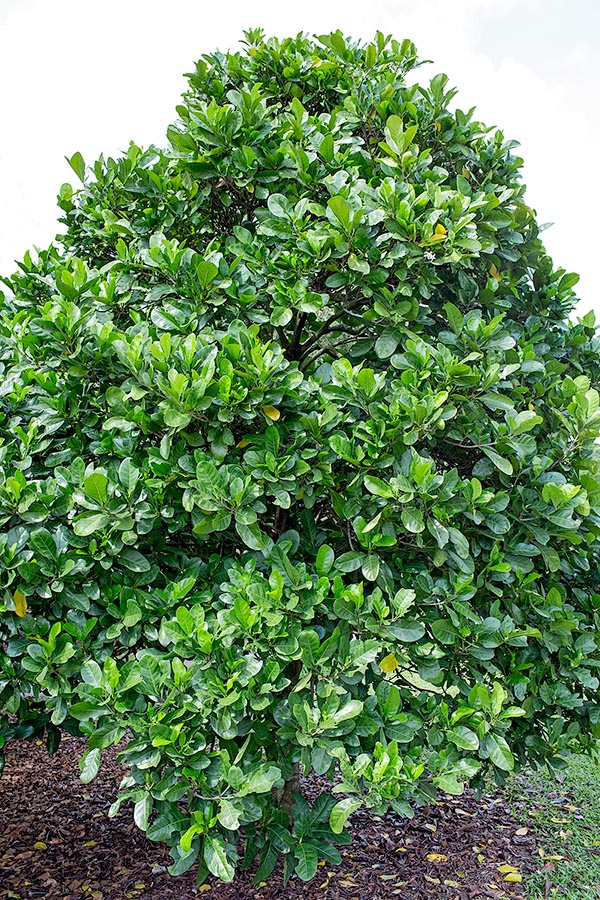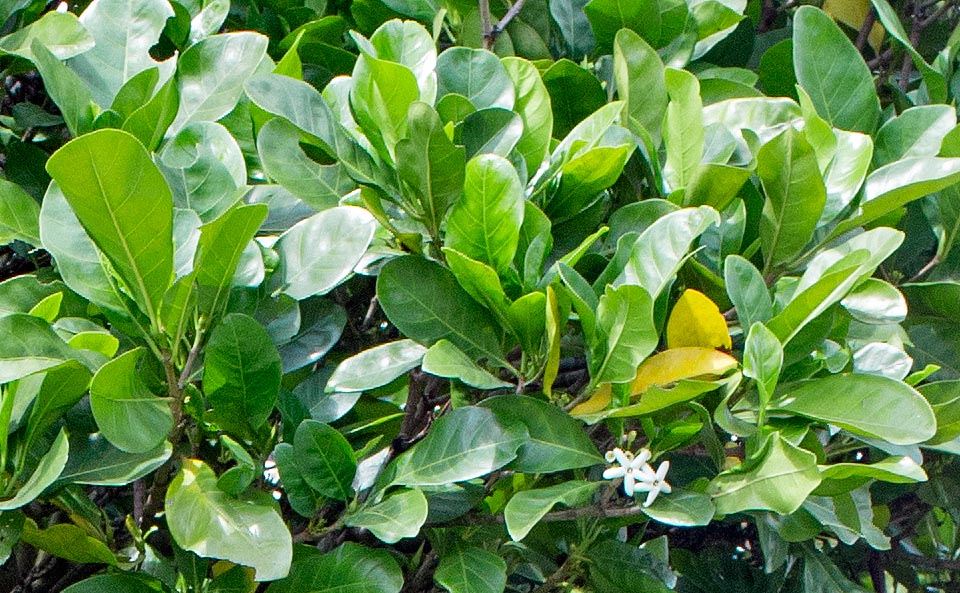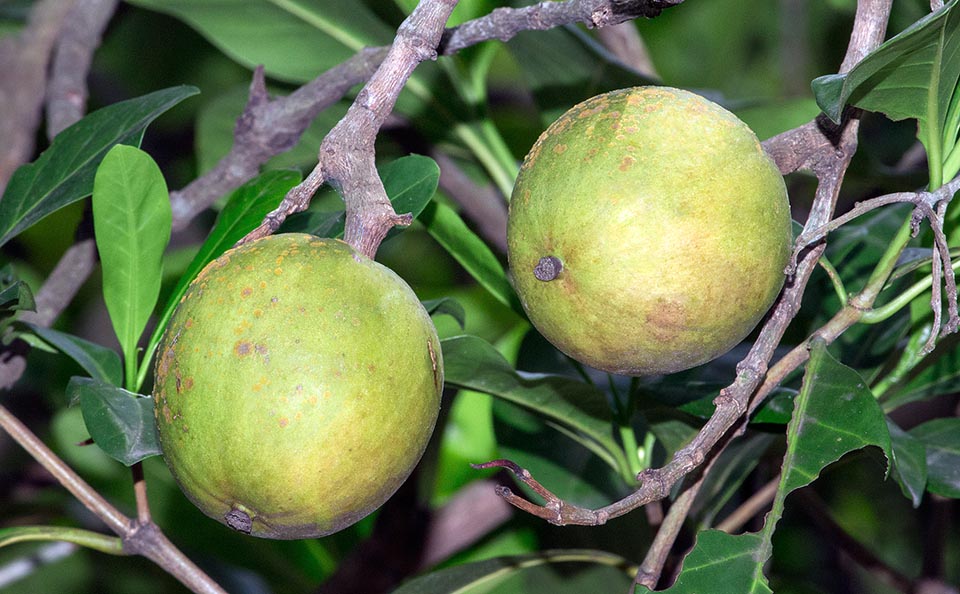Family : Rubiaceae

Text © Pietro Puccio

English translation by Mario Beltramini

Atractocarpus fitzalanii is a very ramified 3-8 m tall tree of north-eastern Queensland © Giuseppe Mazza
The species is native to Australia (north-eastern Queensland) where it lives in the humid forests from the sea level up to about 1500 m of altitude.
The name of the genus is the combination of the Greek substantives “ἄτρακτος” (atractos) = spindle and “καρπός (carpόs) = fruit, with reference to the shape of the fruits of the type species; the species is honoured to the Irish botanist and collector Eugene Fitzherbert Albini Fitzalan (1830-1911) who, transferred in Australia, gave a remarkable contribution to the knowledge of the flora of Queensland.
Common names: brown gardenia, native gardenia, orange randia, papajarin, yellow mangosteen (English-Australia).
The Atractocarpus fitzalanii (F.Muell.) Puttock (1999) is a shrub or small evergreen tree, 3-8 m tall, with greyish and smooth bark.
The leaves are opposite, simple, elliptic to oblong-ovate with obtuse apex and entire margin, 10-20 cm long and 3-8 cm broad, coriaceous, of intense glossy green colour and prominent yellowish veins.
The inflorescences are axillar cymes at the base of the new buds bearing imbutiform flowers, unisexual due to partial abortion of the organs of the other sex, of white colour and intensely scented.
Male flowers with campanulate calyx with truncated apex, corolla with about 1 cm long tube, 5 oblong lobes, 1-1,5 cm long, and sessile anthers inside the tube.
Female flowers with campanulate calyx, about 0,6 cm long, with just hinted lobes, corolla with about 1,5 cm long tube and 5 oblong lobes, about 1,5 cm long, inferior ovary and 1,4-1,6 cm long style.
The flowers open at nightfall and are pollinated by the moths.
Globose or ovoid fruits of 3-8 cm of diameter of yellow colour when ripe, with pulp having a taste that after some recalls that of the mangosteen (Garcinia × mangostana L.), containing numerous flat seeds almost circular of 6-7 mm of diameter.
It propagates by seed, that must be interred in the shortest possible time, previously kept in lukewarm water for one day, in loam for sowing with addition of siliceous sand or perlite per a 30%, maintained humid at the temperature of 25-28 °C, with germination times of 1-2 months; it reproduces also by cutting.

Big leaves, even 20 cm long, and flowers opening at nightfall to be pollinated by the moths © Giuseppe Mazza

The edible fruits, globose or ovoid of 3-8 cm of diameter, become yellow when ripe. For some the pulp recalls the mangosteen taste © Giuseppe Mazza
Synonyms: Gardenia fitzalanii F.Muell. (1860); Randia fitzalanii (F.Muell.) F.Muell. ex Benth. (1867); Trukia fitzalanii (F.Muell.) Fosberg (1987).
→ To appreciate the biodiversity within the RUBIACEAE family please click here.
